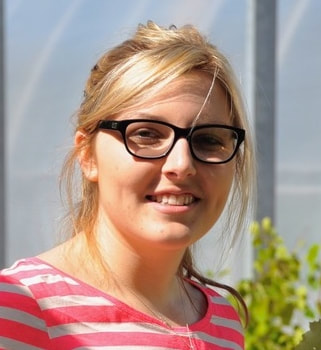|
Meghan Rains, PhD student Algoma University / Queen's University Pathogens, climate change, and pollution represent important stressors that plants face continuously. To better prepare for a changing terrestrial landscape, we must understand how plants adapt and cope with various environmental stressors. The plant cuticle and suberized cells (cork) are among the critical adaptations that plants developed when they moved from an aqueous environment to land. These cell wall-specific extracellular lipid barriers provide the first line of defense against pathogens and control water exchange. The cuticle covers most aerial plant surfaces and is composed of a polymer of fatty acids and waxes. The periderms of roots, tubers, and tree bark, contain waxes and suberin –an esterified network of glycerol and fatty acid derivatives that is bound to a lignin-like polymer. Although structural models have been inferred from chemical depolymerizations, the insoluble nature of these polymers makes analyses challenging, and consequently, the native structure of suberin remains unclear. Much of the current research on suberin biosynthesis has focused on the model plant Arabidopsis thaliana. However, the complete pathways have not yet been fully characterized, and it is unclear how knowledge derived from Arabidopsis translates to woody tree periderms. This dissertation work used a combination of chemical and molecular approaches to identify candidate genes for suberin biosynthesis and to investigate the structure of the polyester using the model tree, Populus trichocarpa (Poplar). The results from this research further our understanding of suberin structure in tree bark, establish improved methodologies, and generate hypotheses for future targeted studies.
Dr. Kenji Nakahara, Lecturer Pathogen-Plant Interactions Group, Research Faculty of Agriculture, Hokkaido University, Sapporo, Hokkaido 060-8589, Japan RNA silencing is one of major antiviral systems in plants and most plant viruses encode RNA silencing suppressors (RSS) to facilitate their infection of plants by inhibiting the plant’s endogenous antiviral RNA-silencing machinery. Previously, a tobacco calmodulin-like protein (CML), termed rgs-CaM, has been reported to interact with HC-Pro and 2b, which are RSSs encoded by members of the genus Potyvirus and Cucumovirus, respectively. We have shown that the tobacco CML counteractively functions as an antiviral defense factor to direct degradation of its interacting RSS proteins via autophagy. Further studies suggest that the rgs-CaM-mediated counterdefense against RSSs involves salicylic acid signaling. Plants encode dozens of CMLs (50 and 32 CMLs in Arabidopsis and rice, respectively). Several CMLs of tobacco and other plants are similar to rgs-CaM in their amino acid sequences, suggesting possible binding to viral RSSs and involvement with antiviral defense. We have been investigating whether Arabidopsis CML orthologs of rgs-CaM may be involved in plant/virus interaction and I will present data from research in Japan and recent collaborative work in the Snedden lab here at Queen’s. |
Archives
February 2021
|


